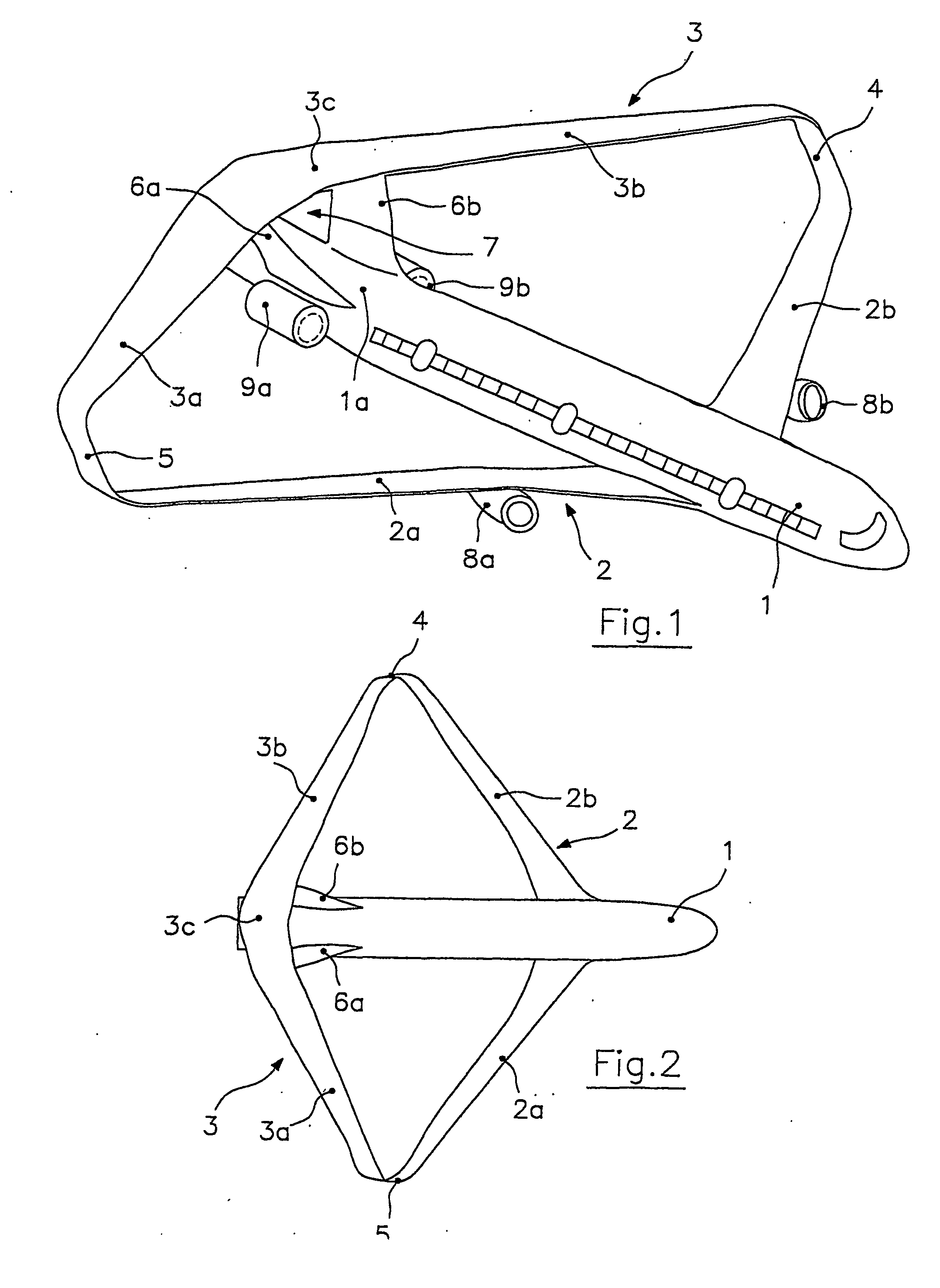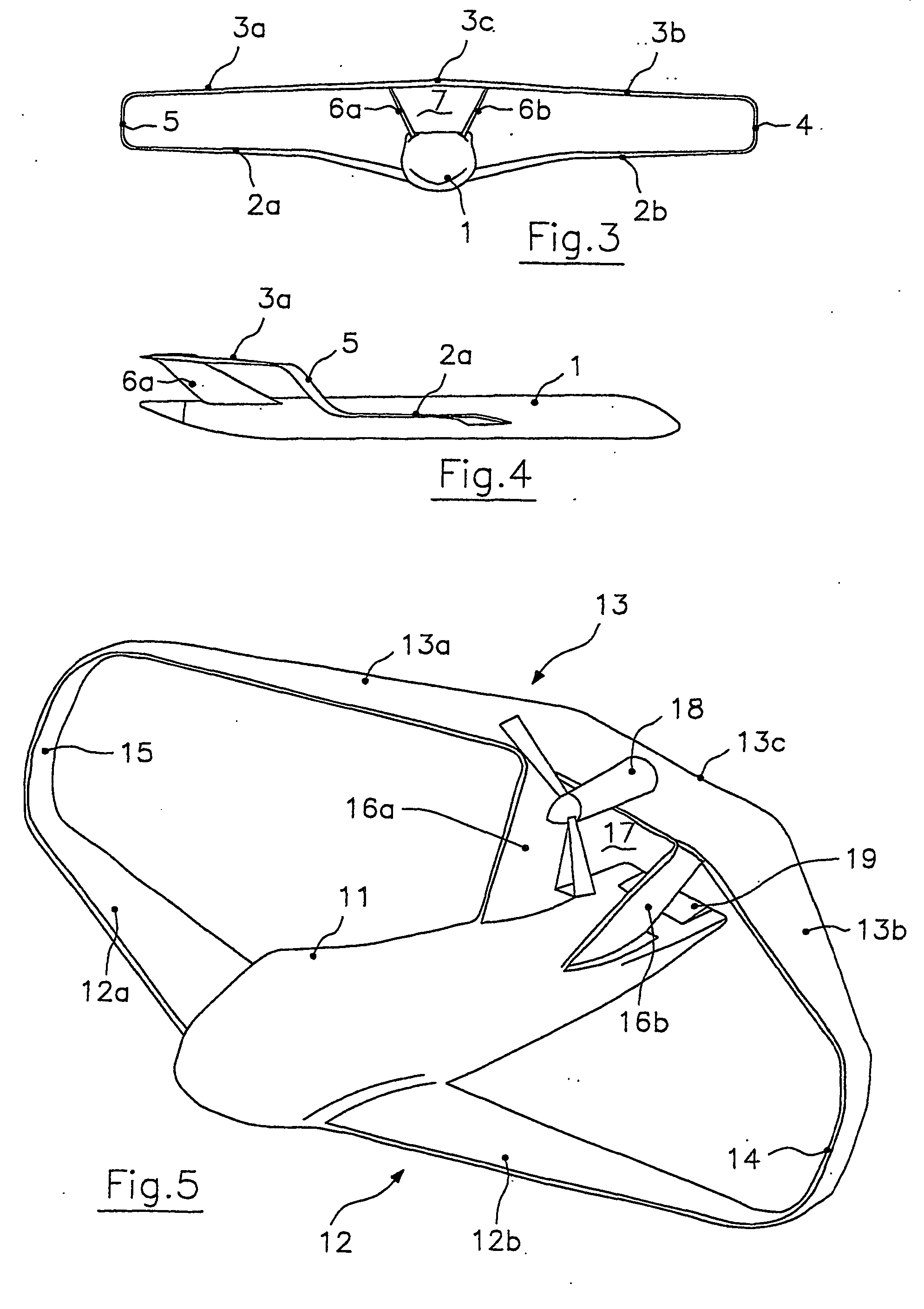Swept-wing box-type aircraft with high fligh static stability
- Summary
- Abstract
- Description
- Claims
- Application Information
AI Technical Summary
Benefits of technology
Problems solved by technology
Method used
Image
Examples
Embodiment Construction
[0019] With reference to FIGS. 1 to 4, the aircraft according to the present invention comprises a fuselage 1, a front wing 2 formed by half wings 2a and 2b and a rear wing 3 formed by half wings 3a and 3b, said half-wings 2a, b and 3a, b extending from opposite sides of fuselage 1. The front wing 2 and rear wing 3 have opposite sweep angles; in particular, the sweep angle is positive for front wing 2 and negative for rear wing 3. Besides, the front wing extends from the bottom fuselage 1 and crosses the fuselage under the cargo deck in such a way that the cargo capacity is significantly improved, while rear wing 3 extends over fuselage 1. As a pure example, the sweep angle of half wings 2a and 2b with respect to the longitudinal axis of fuselage 1 is comprised between 30° and 45°, while the angle of half wings 3a and 3b may vary from −18 to −25°.
[0020] The average lying planes of front wing 2 and rear wing 3 are close to horizontal and spaced apart from each other and their ends a...
PUM
 Login to View More
Login to View More Abstract
Description
Claims
Application Information
 Login to View More
Login to View More - R&D
- Intellectual Property
- Life Sciences
- Materials
- Tech Scout
- Unparalleled Data Quality
- Higher Quality Content
- 60% Fewer Hallucinations
Browse by: Latest US Patents, China's latest patents, Technical Efficacy Thesaurus, Application Domain, Technology Topic, Popular Technical Reports.
© 2025 PatSnap. All rights reserved.Legal|Privacy policy|Modern Slavery Act Transparency Statement|Sitemap|About US| Contact US: help@patsnap.com



